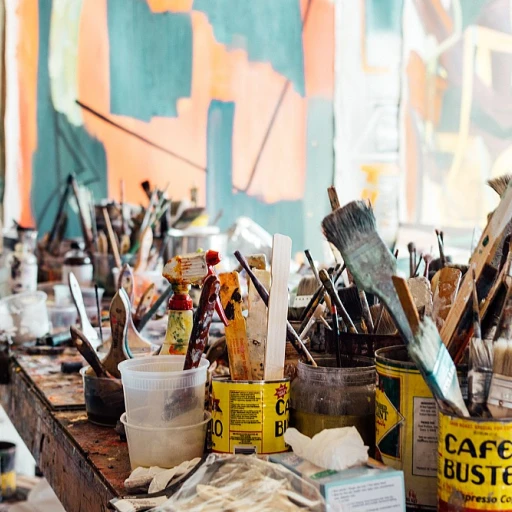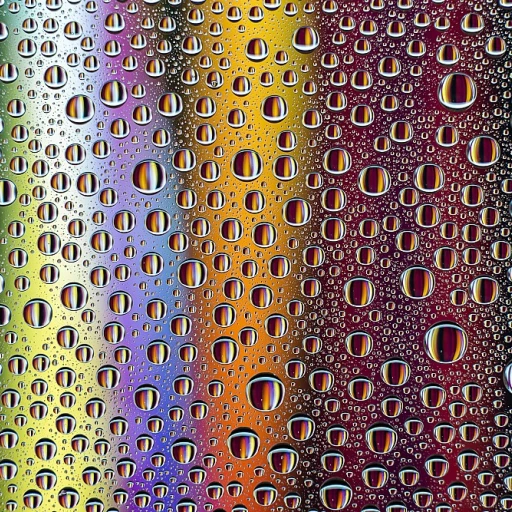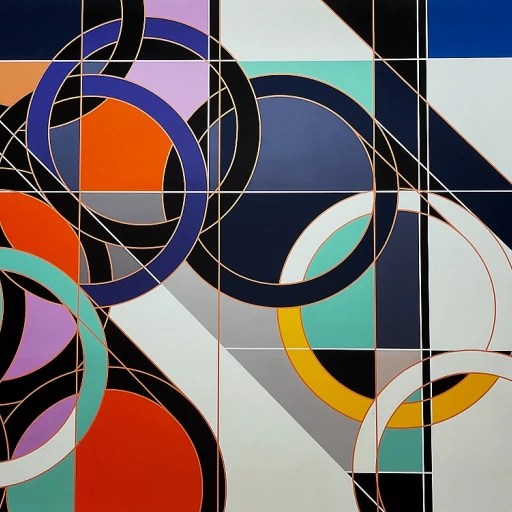-teaser.webp)
The Power of Free and Paid Design Tools
Unleashing Creativity with Both Cost-Free and Premium Design Software
In the vibrant world of design, having the right software can make a significant difference. Both free and premium design tools wield the power to transform the creative process, enabling artists to bring their visions to life with precision and flair. Free design tools offer accessibility and simplicity, often serving as the initial stepping stones for budding designers. They enable users to explore their creativity without financial constraints, making them perfect for those just starting their journey or those wishing to experiment with new aesthetic directions. However, while they offer a robust introduction, the range of features is usually limited compared to their paid counterparts. On the other hand, premium design tools are the epitome of professional-grade quality, packed with advanced features that cater to complex and sophisticated design needs. These tools provide unparalleled flexibility and control, allowing designers to execute intricate projects with ease. Investing in a premium design tool can elevate the creative process, offering capabilities that free software may not match, such as intricate vector editing, superior color grading options, and 3D modeling facilities. Yet, the decision between free and paid tools often revolves around the requirements specific to a designer's goals and the scope of their projects. While premium tools cater to niche demands in high-stakes environments, free alternatives still hold charm by offering valuable resources at no cost. For instance, many successful initiatives begin with free software before seamlessly transitioning to paid versions when the need for enhanced features becomes apparent. As we navigate through the diverse landscape of design software, it's essential to note how these tools not only influence personal creativity but also play a pivotal role in broader spaces like social media and real-time collaboration. In the following sections, we will explore how using templates can aid in crafting breathtaking designs, the unique features that make design software stand out, and how evolving as a designer can lead to embracing such innovative tools. Moreover, the integration of digital innovations, such as NFTs, is revolutionizing the way luxury art ownership intertwines with these design tools—an aspect explored in more detail at our linked article on NFT revolution.Creating Stunning Designs with Templates
Utilizing Templates for Exceptional Visuals
The realm of design software offers a plethora of templates that can transform your creative vision into extraordinary visuals with ease. Whether you're working with free or premium tools, these templates serve as a foundation, allowing even beginners to craft designs that stand out. Templates provide a skeletal framework that helps streamline the design process without compromising on quality. Navigating through the wide array of templates available today, you'll notice they range from minimalist designs to more intricate layouts. This variety not only caters to diverse tastes but also aligns with different project requirements. Choosing the right template can significantly impact the communication of your message, enhancing both its visual appeal and effectiveness. Moreover, customizing templates ensures that your work preserves its unique signature. With the multitude of design elements that these tools offer, personalization becomes a breeze, allowing designers to tweak fonts, colors, and images to align perfectly with their brand's identity. This capability empowers even novice designers to produce polished and professional outcomes. The adaptability of templates translates into a time-saving mechanism, allowing creative minds to focus more on ideation and less on the technical challenges of design composition. By minimizing setup time, designers can fully immerse themselves in the creative process, enabling them to elevate their work potentially to the caliber of high-end luxury artworks. In a world where time is a precious resource, utilizing expertly crafted templates can make a significant difference, enabling you to focus on creativity and innovation, which are the cornerstone of any successful design journey.Features That Make Design Software Stand Out
Unveiling the Features that Add a Wow Factor
When diving into the world of design software, countless features are designed to set each tool apart. While some programs might entice you with user-friendly interfaces, others tend to focus on dazzling advanced functionalities. The key is finding a balance that complements your creative endeavors, allowing you to transform visions into visually compelling realities. One of the standout elements in exceptional design software is the incorporation of intuitive interfaces that make the user experience seamless, even for those new to the design realm. A drag-and-drop functionality can be a game-changer, making complex designing processes easily approachable. The incorporation of AI-driven features can elevate your work further by predicting design patterns or suggesting visual improvements, thus enhancing the quality and efficiency of your projects. For those aiming to craft unique creations, customization options are crucial. They allow designers to tweak templates or start from scratch, ensuring no artistic compromise. These tools often feature expansive libraries filled with fonts, graphics, and images that can provide fresh inspiration or act as a springboard for new ideas. Compatibility and cloud-based capabilities play a pivotal role in modern design settings. Ensuring your software is up-to-date with cross-platform integration can save significant time and prevent potential headaches. Moreover, the ability to store and access projects in the cloud enhances flexibility, enabling you to work effortlessly across various devices. Another captivating feature to consider is collaboration capabilities. Some design tools allow multiple team members to work simultaneously on the same project, fostering creativity and accelerating the design process. Real-time feedback and editing tools can significantly cut down on tedious back-and-forths and streamline communication, ensuring all team members are aligned in their vision. Embracing these progressive features not only boosts productivity but also broadens the scope of what's possible within your creative pursuits. As you continue exploring the factors that make design software a perfect fit for your needs, you might find inspiration akin to the digital harmony discussed in The Silent Symphony: How Sound Sculpture Harmonizes Ultra-Luxury Interiors, which seamlessly integrates art into spatial dimensions.The Role of Design Tools in Social Media
Impact of Design Software on Social Media Presence
In today's digital age, social media platforms are not just for personal connections; they are powerful tools for brands and individuals to showcase their creativity and reach a global audience. Design software plays a crucial role in crafting visually appealing content that stands out in the crowded social media landscape. The ability to create eye-catching graphics and videos with ease is one of the most significant advantages of using design tools for social media. Whether you're working with free or premium software, the array of features available allows for the creation of content that is not only visually stunning but also tailored to fit the specific dimensions and requirements of different social media platforms. Templates are a game-changer in this regard, providing a quick and efficient way to produce professional-quality designs. As discussed earlier, templates can help streamline the creative process, enabling users to maintain a consistent brand aesthetic across various social media channels. Moreover, design tools often come equipped with features that facilitate collaboration, allowing teams to work together in real time, regardless of their physical location. This capability ensures that social media campaigns are cohesive and that feedback can be incorporated swiftly, resulting in timely and relevant content. Ultimately, the right design software empowers users to leverage their creativity and produce content that resonates with their audience, enhancing engagement and driving brand recognition on social media platforms.Collaborating in Real Time with Design Teams
Enhancing Team Dynamics with Seamless Collaboration
In the dynamic world of luxury artwork, where creativity knows no bounds, the ability to collaborate in real time has become a cornerstone of successful design projects. Modern design tools have revolutionized how teams work together, allowing for seamless communication and integration of ideas. Whether you're working on a free platform or investing in a premium software suite, the collaborative features offered by these tools can significantly enhance your creative process.
Imagine a scenario where a designer in Paris can instantly share a design draft with a colleague in New York. They can both make adjustments, provide feedback, and iterate on the design in real time, without the delays of traditional methods. This capability not only saves time but also fosters a more inclusive and dynamic creative environment.
Moreover, the integration of templates, as discussed earlier, allows team members to quickly align on design standards and aesthetics, ensuring consistency across all project elements. The ability to access a shared library of templates and assets means that each team member can contribute to the project with a unified vision.
As the role of design tools in social media continues to expand, the need for real-time collaboration becomes even more critical. Teams can work together to create visually stunning social media campaigns that capture the essence of luxury artwork, ensuring that every post resonates with the intended audience.
Ultimately, the growth and learning opportunities for designers are amplified through collaborative efforts. By working closely with peers, designers can exchange knowledge, refine their skills, and push the boundaries of what's possible in the luxury artwork space.
Learning and Growing as a Designer
Embracing Continuous Learning in Design
The journey of a designer is one of perpetual growth and evolution. As you delve into the world of design software, both free and paid, you'll find that each tool offers unique opportunities to expand your skill set. Whether you're crafting intricate visuals with templates or experimenting with the latest features that make design software stand out, there's always something new to learn.
One of the most exciting aspects of using design tools is their role in social media. These platforms are constantly evolving, and staying updated with the latest trends and techniques can set you apart as a designer. By exploring different tools and their capabilities, you can create content that resonates with audiences and adapts to the dynamic nature of social media.
Collaboration is another key area where design tools can enhance your growth. Working in real time with design teams not only hones your technical skills but also fosters creativity and innovation through shared ideas and feedback. This collaborative environment encourages you to push boundaries and explore new design possibilities.
Ultimately, the more you engage with design tools, the more you learn and grow as a designer. Embrace the challenges and opportunities they present, and let them guide you on a path of continuous development. Whether you're just starting or are a seasoned professional, the world of design is vast and full of potential for those willing to explore it.














